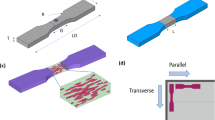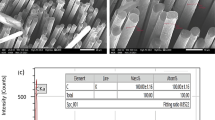The effect of talc and various polymer additives on the basic mechanical properties of polyphenylene sulfone was studied. It was found that with an increase in the concentration of the filler, there is an increase in the elastic strength and a decrease in the plastic properties of polyphenylene sulfone. The physicomechanical properties of various polymer-polymer composites based on polyphenylene sulfone are considered. High efficiency of polycarbonate as a modifier of toughness is revealed. An efficient method has been developed for producing a composite with high values of impact strength and modulus of elasticity, based on the characteristics of the distribution of the filler in the polyphenylene sulfone polycarbonate binary system. It is shown that the concentration of the filler in the polycarbonate phase reduces the impact strength, whereas its concentration in the polyphenylene sulfone phase followed by the introduction of polycarbonate results in an impact-resistant and high modulus composite. Samples obtained by the 3D printing method exhibit high mechanical characteristics.
Similar content being viewed by others
References
B. E. Tokarev and R. B. Tokarev, Internet Zh. “Naukovedenie,” 8, No. 1 (2016) http://naukovedenie.ru/PDF/28EVN116.pdf
A. A. Zhansitov, S. Y. Khashirova, et al., High Performance Polymers, 29, No. 6, 724-729 (2017).
A. A. Zhansitov, A. L. Slonov, et al., Fibre Chemistry, 49, No. 6, 414-419 (2018).
K. C. Chuang, J. E. Grady, and R. D. Draper, “Additive Manufacturing and Characterization of Ultem Polymers and Composites,” NASA/CAMX Conference Proceedings, Dallas, TX, October 26-29, 2015.
V. Kishore, X. Chen, et al., “Solid Freeform Fabrication,” Proc. 26th Annual Int. Solid Freeform Fabrication Symposium – An Additive Manufacturing Conference (2016).
Zh. I. Kurdanova, K. T. Shakhmurzova, et al., Plast. Massy, Nos. 7-8, 23-26 (2017).
Yu. A. Mikhailin, Heat-Resistant Polymers and Polymeric Materials [in Russian], Professiya, St. Petersburg (2006) 624 p.
E. Fitzer, Carbon Fibers and Carbon Composites [in Russian],Mir, Moscw (1998) 336 p.
K. T. Shakhmurzova, A. A. Zhansitov, et al., Izv. KBSU, 6, No. 3, 64-66 (2016).
A. S. Shabaev, A. A. Zhansitov, et al., Polymer Sci. Ser. B, 59, No. 2, 216-224 (2017).
V. N. Kuleznev, “Polymer mixtures and melts” [in Russian], Nauchnye Osn. i Tekhnol., St. Petersburg (2013) 216 p.
S. L. Bazhenov, A. A. Berlin, et al., Polymeric Composite Materials [in Russian], Intellekt, Dolgoprudny (2010) 352 p.
A. L. Slonov, E. V. Rzhevskaya, and A. K. Mikitaev, Izv. KBSU, 6, No. 3, 43-47 (2016).
Author information
Authors and Affiliations
Corresponding author
Additional information
Translated from Khimicheskie Volokna, No. 4, pp. 113 – 116, July – August 2018.
Rights and permissions
About this article
Cite this article
Slonov, A.L., Zhansitov, A.A., Khakulova, D.M. et al. Development of Composite Material Based on Polyphenylene Sulfone for 3D Printing. Fibre Chem 50, 373–377 (2018). https://doi.org/10.1007/s10692-019-09992-5
Published:
Issue Date:
DOI: https://doi.org/10.1007/s10692-019-09992-5




